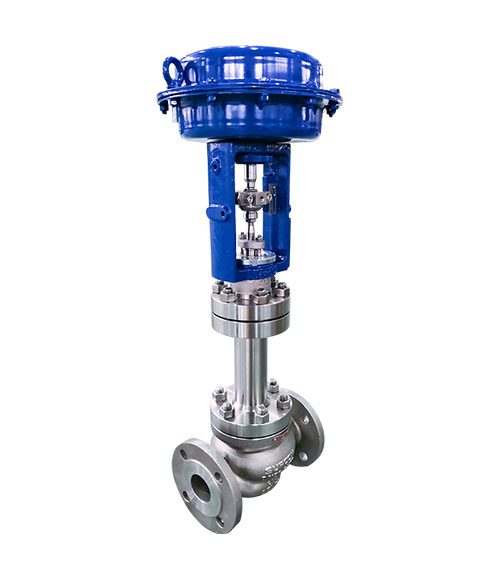Sep. 21, 2020
Valves are control components in industrial fluid transmission systems, which have the functions of diversion, medium, regulation, anti-reverse flow, diversion, and pressure relief. There are many types of existing valves, and with the continuous improvement of the process and performance of various complete sets of equipment, the types of valves are still increasing. Today we will take a look at the characteristics of common valves and their applicable occasions.
Features and applications
The leakage of the single-seat valve is less than or equal to 10-4CV for metal sealing, and less than 10-7CV for soft sealing. It has the characteristics of small allowable pressure difference, complex flow path, and simple structure, so it is suitable for cleanliness with strict leakage requirements and small working pressure difference. Medium occasion. However, small-sized valves (such as DN1/2, 3/4, 20) can also be used on occasions with large pressure differences and are the most widely used valve. The shape of the valve core determines the flow characteristics and loses the original characteristics after being washed. Changing the spool can change the flow characteristics. When selecting this valve, attention should be paid to the pressure difference check to prevent it from being top-opened; due to the complex flow path, it is not suitable for dirty media; it is bulky, and the larger the diameter, the more obvious it is.
Features and applications
Contrary to the single-seat valve, it has the characteristics of large leakage and large allowable pressure difference. It is suitable for clean medium occasions with low leakage requirements and large working pressure difference. It is the most widely used valve. When selecting this valve, pay attention to check leakage Whether the quantity meets the technological requirements, and at the same time, attention should be paid to the influence of anti-blocking and bulkiness.
Sleeve valve
Features and limitations
The sleeve valve has two structures: a single seal and a double seal. The former is equivalent to a single-seat valve and is suitable for a single-seat valve; the latter is equivalent to a double seat valve and is suitable for a double seat valve. In addition, the sleeve valve also has the characteristics of good stability and convenient assembly and disassembly, but the price is 50-200% more expensive than single and double-seat valves. It is second only to single-seat and double-seat valves with a wide range of applications. However, this valve should not be selected for dirty media. At the same time, attention should be paid to the impact of anti-blocking and bulkiness.

Single Seated Valve
Angle valve
Applications
The throttling type is equivalent to a single-seat valve, but the valve body has a simple flow path, so it is suitable for occasions with dirty media with small leakage requirements and small pressure differences and occasions requiring right-angle piping.
Three-way valve
The main purpose
The three-way valve has three channels, which can replace two straight-through single-seat valves and can be used for splitting and merging two streams and the temperature difference is less than or equal to 150℃. When DN is less than or equal to 80, the converging valve can be used for splitting.
Diaphragm valve
Applicable occasions and limitations
The flow path of the diaphragm valve is simple, and the diaphragm has certain corrosion resistance, so it is suitable for two-position cut-off occasions for dirty media and weak corrosive media. This valve should not be used when there are adjustment accuracy requirements and strong corrosiveness (such as water treatment valves). The fatal weakness of the valve is that the diaphragm is easily damaged.
Butterfly valve
Features and applications
The butterfly valve is equivalent to taking a straight pipe as the valve body, and the valve body is equivalent to the valve seat, so the "self-cleaning" performance is good, the volume is small, and the weight is light. It is suitable for dirty media and large diameter, large flow, low pressure difference. occasion. When DN>300, it is usually completed by a butterfly valve, and the larger the diameter, the more remarkable the characteristics.
Ball valve
Good self-cleaning performance
When the "O"-shaped ball valve is fully open, it is unimpeded and has the best "self-cleaning" performance, so it is suitable for two-position cut-off occasions with particularly dirty and fiber-containing media; the "V"-shaped ball valve has approximately equal percentage adjustment characteristics, so It is suitable for unclean, fiber-containing media and relatively large adjustment occasions.
main feature
This valve is between the butterfly valve and the ball valve. It has good "self-cleaning" performance and adjustment performance, and can also be cut off, so it is suitable for adjustment occasions with dirty media and small leakage requirements, but the valve is relatively expensive.
Previous: The Role of the Regulating Valve
Headquarter Add.: SUPCON Park, No.309 Liuhe Road, Binjiang District, Hangzhou, 310053, China.
Tel.: +86 571 8111 9774
Fax: +86 571 8111 9737
E-mail: [email protected]
